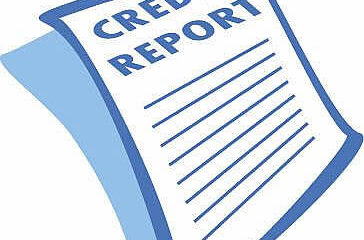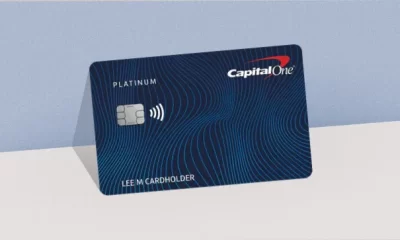Credit
AES Student Loans – Student Loan Access and Overview

American Education Services (AES) – Managing Student Loans
Servicing student loans has become major business in the United States. It is estimated at up to 70% of students graduate college with some amount of student loan debt. Student loan debt is growing faster than other other form of consumer debt. Sadly, many experts are anticipating it being a major component of any future financial crisis. Given the nature of the lending industry, it makes sense that organizations have emerged with the sole purpose of managing loans (as opposed to actually providing the funds).
AES is not a lender in the traditional sense. You cannot apply for a student loan with AES directly. With that said, you may find that you end up managing your student loan payments and account services with AES. As a loan service provider, they will be the platform for which aspects of your loan account are handled. This would include features like making payments, seeking payment assistance, and managing your account settings.
What is AES and How Do They Fit In To The Student Loan Puzzle?

Student loans (especially private student loans) often change hands between lenders . With that exchange, sometimes consumers will find that their loans are serviced by new companies. AES would fall under the “loan service” umbrella. They are not a bank or a lender. While the lending provider switches hands regularly (banks selling loans to other banks), AES provides a single source for servicing your loan. AES is a federally approved service for lenders. There are only a number of student loan service providers that meet the criteria to service loans under direction of the Department of Education and AES is one of those groups. Of course, this is not to say they are not without their fair share of criticism.
AES services federal loans as well as a select group of private loans. The organization was made under the direction of the Pennsylvania Higher Education Assistance Agency (PHEAA) with the intention to service a group of loans known as the Federal Family Education Loan Program (FFELP). The group services millions of student loans and provides customer service to borrowers who are in the repayment stage of their student loan.
Services Provided By AES Student Loans
Once you set up an account with AES you will be able to manage your account online. Services provided with AES will include loan payment services, forbearance services, payment options, managing your loan profile, and viewing your loan balance. Before you can access your loan details you will need to create an account with AES. Alternatively you may be able to sign in to your account using the Partner Access Sign In.
The screenshot above is what you will find when you visit www.aessuccess.org and it actually provides 3 distinct options. The yellow sign in button will be for anyone who already has set up an AES account with AES Success. Following the link will allow you to log in to your account using your AES Username and Password.
If you are creating an account for the first time, some verification will be required before you can access your loan details. Customers will need to verify their identity and create an account Username and Password which will be used to access their loan details in the future.
The final option is the Partner Access Link. If you are logging in using an existing account which is Partnered with AES then you will follow this link and provide your Partner Access Account details. This will allow you to access your account in cooperation with AES.
Paying Your Student Loans With AES
There is one big thing to remember with loans – always make your payment! Missing loan payments is one of the biggest threats borrowers face. There are a number of ways to make payments including direct debit, setting up online payments, and paying by check. Be sure to set up the option that will be easiest for you to manage to avoid missing a payment.

Targeting your payments is another interesting option available for borrowers. You will be able to decide how much you would like to pay in addition to your minimum payment due. These additional funds will be allocated to allow of you existing loans and will go towards paying down the balances which can save you in interest expenses in the long run. If you are able to make additional payment on your loan this is often a good idea so long as you can afford the expense.
Trouble Paying For Your Student Loans With AES
AES provides many options for customers who may not be able to make their monthly payments. If you are finding that you cannot afford you payment this should be the first place you go to for help. Ignoring the problem and hoping it goes away is not going to work out well in the long run. Eventually you loan will be moved to collections and your credit history will suffer the consequences.
There are a variety of services and options for customers who cannot meet their payment responsibilities. It is not in anyone’s interest for borrowers to miss their payment and AES attempts to provide some options for relief. Some of the assistance AES provides includes:
- Changing your payment due date
- Updating your payment plan to reduce payment
- Postpone or forebear your payment temporarily
- Loan consolidation to make one single payment
All of these above avenues are viable options to assist borrowers who are dealing with financial hardships. AES provides details regarding all of these options to attempt to provide help when it is needed most.
Managing Your Student Loan Account With AES
As we have discussed, AES is a loan management group. All aspects of your loan can be addressed within your online account. You will be able to view loans details such as current balance and interest rate. Personal settings such as contact information and account details can also be addressed.
In addition to the information found above, you will also find your tax information for your loan within your account management features. This is especially important because the interest you pay on your student loans is tax deductible. When you file you taxes it is absolutely critical that you include any student loan interest payment you made during the tax year.
What People Are Saying About AES Student Loan Servicing
Overall, AES has been absolutely pummeled with poor reviews. The main complaints seems to be focused around miserable customer service. Consumer Affairs (a for profit consumer review website) has some of the most scathing reviews. They currently have a 1.1 out of 5 based on reviews from this year.
Customer service in the lending industry can be a tough sell. People are already upset to be paying money often at high interest rates. Sadly, AES seems to fail to convince consumers that their mobile App is any good either. The app has a 2.3 rating on the Apple iTunes Store.
Reading through the reviews does reveal one major problem affecting consumers – they do not understand how loans work. Ultimately, these loans were applied for and accepted by the applicants and their complaints of high payments and interest rate is not the fault of AES. Consumers need to be aware of what they are getting in to when they take on debt. Many of the reviews you see on loan providers and services often reflect the ignorance of the average consumer. That is why Free Credit Insights and other personal finance blogs exist!
Final Thoughts On AES Student Loans
There is a lot of confusion about exactly what the role of AES is in the student loan space. Hopefully this post helps clear up some of the confusion. Many users are telling people who never take a loan out with AES. Unfortunately their words do not mean all that much. Your federal loan may or may not be serviced by AES and you likely will have no say whatsoever. Your loan service provider is not in charge of your loan – you are in charge of your loan. The terms you accepted were provided at the time of applying but all to often we ignore this information until it becomes a problem later in life.
In preparing this information, I spent quite a bit of time researching and using the AES website and interface. It seems to be well organized and succinct although their are portions of the site that feel dated and somewhat difficult to navigate. If you are having issues with AES you can contact their customer service at 1-800-233-0557. It may be difficult but remember that the customer service rep was not the one who made the decision to take out these loans – you made that decision.
Helpful Links:
Credit
Bouncing Back: A Guide to Understanding and Recovering from Sudden Credit Score Drops

Experiencing a sudden decline in your credit score can be both startling and disconcerting. The number that financial institutions use to judge your creditworthiness can fluctuate for a myriad of reasons, many of which might not be immediately apparent. However, understanding the underpinnings of credit scores and the steps that can be taken to recuperate lost points is crucial. In this comprehensive guide, we delve into the common culprits behind these unexpected drops and map out a clear route to credit score recovery, empowering you to regain control of your financial health.
Unveiling the Mystery: Why Did My Credit Score Drop?
Before we explore recovery tactics, let’s first examine the potential triggers of a sudden decrease in your credit score:
- Inaccuracies on your credit report: Sometimes, the fault may lie with errors on your credit report. It’s not uncommon for credit reports to contain mistakes, ranging from incorrect personal information to misreported account statuses. Regularly reviewing your credit reports from the three major credit bureaus is essential.
- Missed or late payments: Your payment history is the most influential factor for most credit scoring models. Even a single payment that’s 30 days late can significantly impact your score.
- Increase in credit utilization: An uptick in your credit card balances can raise your credit utilization ratio, which might lead to a score decrease. Experts often recommend keeping this ratio under 30%.
- Recently opened credit accounts: Opening several credit accounts in a short period can result in a minor score dip due to the hard inquiries and the average age of your credit accounts being lowered.
- Closing old credit accounts: Conversely, closing your oldest accounts can shorten your credit history length and potentially lower your score.
Strategies for Credit Score Revival
Once you’ve pinpointed the cause of your credit score drop, you can implement several strategies to nurse it back to health:
- Dispute Credit Report ErrorsMistakes on a credit report can be disputed by contacting the credit bureaus directly or through the assistance of a consumer financial protection bureau. Timely correction of these inaccuracies can help restore your score.
- Focus on Payment PunctualityEnsure that all your bills are paid on time. Setting up automatic payments or calendar reminders can be effective ways to avoid missing due dates. Consistent, timely payments will gradually improve your score.
- Reduce Outstanding BalancesWork towards lowering the balances on your credit cards and loans. The FICO score model views lower credit utilization ratios favorably. Crafting a budget that prioritizes debt reduction can be beneficial for your score.
- Be Strategic About Credit ApplicationsLimit the number of new credit applications you submit. Each application can result in a hard inquiry, which can slightly damage your score. If you must apply for credit, try to do so sparingly.
- Maintain a Mix of CreditHaving a variety of credit types—from credit cards to auto loans—can be positive for your score, but only if managed responsibly. This demonstrates your ability to handle different kinds of financial obligations.
Prevention: The Best Medicine
Prevention is better than cure, and this adage holds especially true when it comes to credit scores. To prevent future drops, maintain good financial habits, monitor your credit report regularly, and adjust your spending behaviors to align with your credit goals. With a proactive approach, a sudden credit score drop will be nothing more than a temporary setback on your journey to financial success.
Remember, credit score recovery is a marathon, not a sprint. It requires patience, discipline, and a clear understanding of the factors that influence your score. By following the guidelines outlined in this post and leveraging resources from reputable sources, you’ll be well on your way to bouncing back from a credit score dip and forging a path to a robust financial future.
Credit
From Decent to Excellent: Proven Strategies to Elevate Your 640 Credit Score and Unlock Financial Freedom

A 640 credit score is seen as the gateway to fair credit territory—a launchpad for individuals striving to turn their financial narrative from good to great. While this score is certainly not the bottom of the credit spectrum, it doesn’t offer the benefits that higher scores provide. By employing strategic measures to improve your credit score, you are not just brushing up a number; you’re opening a world of financial opportunities that can lead to more favorable loan terms, lower interest rates, and a sense of security. In this post, we’ll explore actionable tips to help you elevate your credit score from decent to excellent, setting the stage for financial freedom and success.
Understanding the Importance of Your Credit Score
Your credit score is a critical financial parameter that lenders use to evaluate your creditworthiness. A 640 score signals to creditors that you’re on the cusp of transitioning to a higher credit tier. By enhancing your score, you can access better financial products and services, which can significantly impact your life. Let’s take a closer look at how you can make this transition.
Review Your Credit Reports Regularly
Errors on credit reports can drag down your score. It’s essential to check your credit reports from all three major credit bureaus—Equifax, Experian, and TransUnion—regularly and dispute any inaccuracies you find. This seemingly small step can have a big impact on your credit score.
Reduce Your Credit Utilization Ratio
High credit utilization can significantly lower your score. Financial experts recommend keeping your credit utilization ratio below 30%. This means if you have a credit limit of $10,000 across all cards, you should strive to owe less than $3,000 at any given time.
Strategic Actions to Boost Your Score
Elevating your credit score requires a combination of tactics and sustained effort. The following strategies are designed to help you responsibly manage credit and showcase your reliability to lenders:
- Pay Your Bills on Time: Your payment history is the single most significant factor affecting your credit score. Set up reminders or automate your payments to ensure that you never miss a due date.
- Avoid Taking on More Debt: While it might be tempting to open a new credit account to improve your credit mix, it’s essential to avoid incurring more debt until your score has improved.
- Increase Your Credit Limits: If you have a good payment history, you may be able to negotiate higher credit limits on your existing accounts, which can help lower your overall credit utilization.
Consider a Mix of Credit
Having different types of credit—such as credit cards, retail accounts, installment loans, finance company accounts, and mortgage loans—can benefit your score. However, it’s not wise to take out a loan you don’t need just to improve your credit mix.
Become an Authorized User
Becoming an authorized user on a family member or friend’s credit card can be a quick way to boost your score, as long as the primary cardholder has a strong payment history and keeps low balances.
Maintaining and Monitoring Your Progress
Improving your credit score is an ongoing process. You must be diligent about maintaining good credit habits and monitoring your credit score regularly. Patience is key—the results of your efforts will materialize over time as your credit history grows and your score begins to reflect your creditworthiness accurately. Embrace the journey towards financial freedom with confidence, knowing that each step you take is a move towards better financial opportunities.
By following the strategies outlined in this post and making informed decisions, you can transform a 640 credit score into a stellar financial reputation. Remember, each positive action contributes to a brighter financial future. Start today, and watch your credit score—and your financial opportunities—soar.
Credit
Is the The U.S. Bank Altitude® Connect Visa Signature® Card Hard to Get? What Are the Benefits?
The U.S. Bank Altitude® Connect Visa Signature® Card is a compelling option for those who travel frequently or spend a lot on gas. It offers a range of benefits and rewards that cater to various spending habits, especially in categories like travel, gas stations, and streaming services.
One of the standout features of this card is its reward structure. It offers 5X points on prepaid hotels and car rentals booked directly in the Altitude Rewards Center. Additionally, cardholders earn 4X points on travel at gas stations and EV charging stations, making it an excellent choice for road trips. For everyday spending, the card provides 2X points at grocery stores, grocery delivery, dining, and on eligible streaming services, with 1X point on all other eligible purchases.
The card also comes with a lucrative sign-up bonus. New cardholders can earn 50,000 bonus points after spending $2,000 within the first 120 days of account opening. This bonus is equivalent to a $500 value redeemable towards travel, gift cards, cash back, merchandise, and more. Notably, points earned on the Altitude Connect Card do not expire, adding to its long-term value.
Other significant benefits include a $30 credit for annual streaming service purchases like Netflix, Hulu, Spotify®, and Apple Music. Additionally, the card offers up to $100 in statement credits for TSA PreCheck® or Global Entry® application fees every four years. For frequent flyers, the complimentary Priority Pass™ Select membership provides access to over 1,300 VIP airport lounges worldwide, enhancing the travel experience.
The U.S. Bank Altitude® Connect Visa Signature® Card is generally targeted towards individuals with good to excellent credit scores. This implies that applicants should have a well-established credit history and a high credit score to increase their chances of approval. The card has an annual fee of $95 after the first year, which is waived initially. However, it does not have foreign transaction fees, making it more appealing for international purchases.
In terms of APR, the card has a variable APR ranging from 21.24% to 29.24%. Like most credit cards, it’s important to consider this aspect, especially if you plan to carry a balance on the card. The card also offers a Pay over Time feature with U.S. Bank ExtendPay™ Plan, allowing cardholders to split eligible purchases into equal monthly payments.
Overall, the U.S. Bank Altitude® Connect Visa Signature® Card is a strong contender in the category of travel and gas rewards credit cards. Its combination of high reward rates, travel perks, and streaming service credits make it a valuable card for those who spend heavily in these areas. However, potential applicants should weigh the annual fee and credit requirements against the benefits to determine if it aligns with their financial habits and goals.
-

 Business2 years ago
Business2 years agoHow To Check Your Business Credit Score
-

 Credit2 years ago
Credit2 years agoBetter Cash Installment Loan Offer Review
-

 Credit2 years ago
Credit2 years ago7 Tips for Managing Your Finances in Your 20s
-

 Family2 years ago
Family2 years agoThe Importance of Saving Money on Baby Products
-
Credit2 years ago
Best Cash Back Credit Cards of 2023: The Ultimate Guide
-

 Credit2 years ago
Credit2 years agoWhat Is The Impact of Student Loan Debt on Your Credit Score?
-
Credit1 year ago
Bouncing Back: A Guide to Understanding and Recovering from Sudden Credit Score Drops
-

 Credit2 years ago
Credit2 years agoUnlocking Potential: The Capital One Credit Increase Hack





